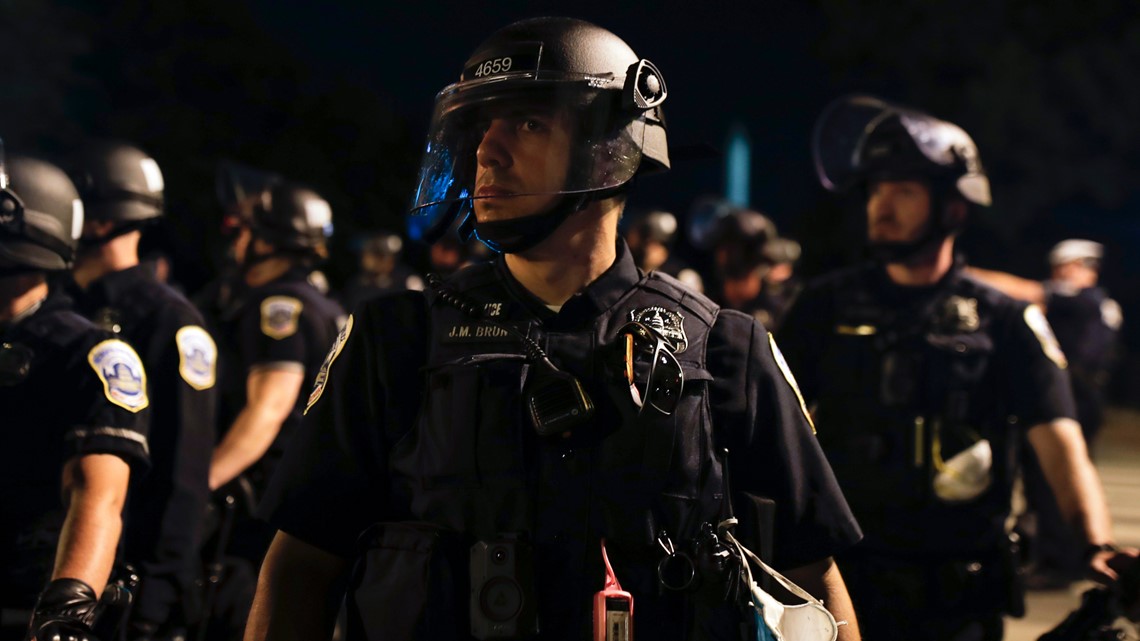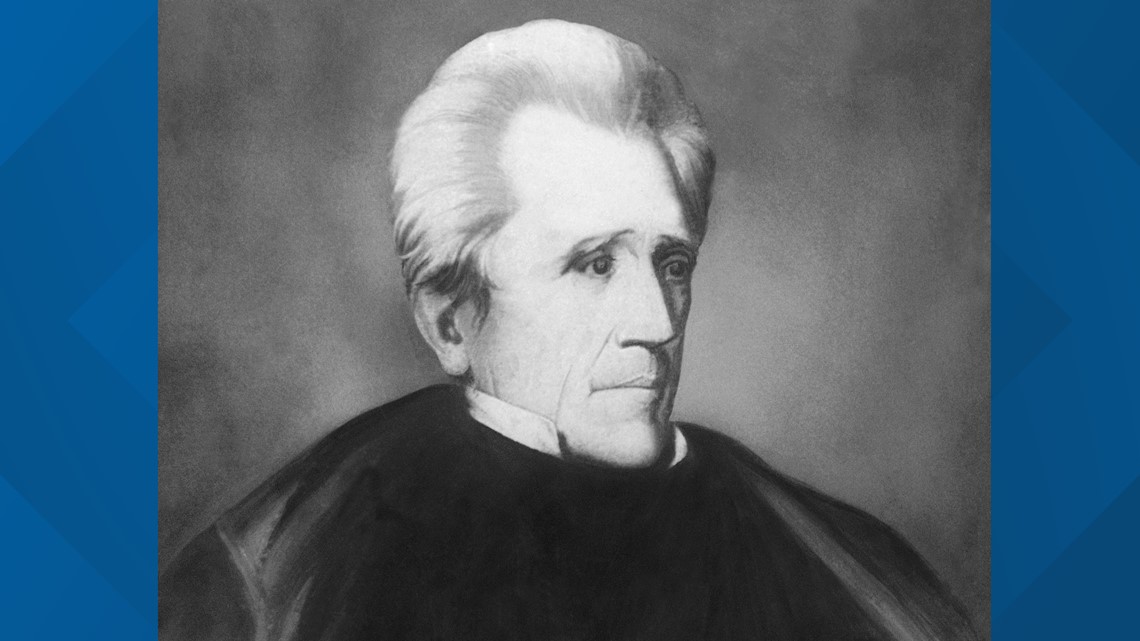WASHINGTON, D.C., USA — QUESTION 1:
Is Lafayette Square federal property?
ANSWER 1:
Yes.
QUESTION 2:
Who would be responsible for arresting vandals?
ANSWER 2:
U.S. Park Police who works cooperatively with U.S. Secret Service and MPD.
SOURCE:
National Park Service
PROCESS:
On Monday, protesters tried to tear down the Andrew Jackson statue in Lafayette Square here in Washington, DC.
This morning, President Trumped tweeted about it, saying he’s authorized the federal government to arrest anyone who vandalizes or destroys any monuments or statues on federal property.
Our experts are the National Park Service.
NPS was created on August 25, 1916, by Congress through the National Park Service Organic Act and is an agency of the United States Department of the Interior.
NPS manages and maintains several hundred national parks, monuments, and other designated properties of the federal government
NPS confirmed “Lafayette Square is a public park on federally owned property and it’s just one of the federally owned properties the National Park Service manages and maintains.”
An N-P-S spokesperson says if someone is caught vandalizing any statue or items in Lafayette Square, U.S. Park Police would be the primary federal agency. Park Police say they also work cooperatively with the U.S. Secret Service, and MPD.


Lafayette Square is a seven-acre public park located directly north of the White House on H Street between 15th and 17th Streets, NW. The Square and the surrounding structures were designated a National Historic Landmark District in 1970.
Originally planned as part of the pleasure grounds surrounding the Executive Mansion, the area was called "President's Park". The Square was separated from the White House grounds in 1804 when President Jefferson had Pennsylvania cut through. In 1824, the Square was officially named in honor of General Lafayette of France.
Who is Andrew Jackson and why did protesters try to take down his statue?
Protesters on Monday tried to tear down the statue that was commissioned by Congress in 1847. Here is more on our 7th U.S. President.


Right before 8 p.m., protesters broke through the fence surrounding the Andrew Jackson statue, threw ropes around it and climbed on top to try to topple the bronze statue, depicting Jackson in military uniform riding a horse that is reared on its hind legs. The group was ultimately unsuccessful after being forced out of the square by police.
Jackson does have ties to slavery and was a plantation owner, which may have led to protesters trying to take his statue down.
Jackson served as President of the United States from 1829 to 1837 and was a Representative and Senator for Tennessee before becoming President. He also served as the Governor of Florida when the state was just a territory.
Andrew Jackson's statue weighs 15 tons and was commissioned in 1847 by Congress to honor Jackson as a General for his commanding of US troops during the Battle of New Orleans in the War of 1812. The statue was erected in 1853, before the Civil War brought an end to slavery.
An enslaved apprentice from South Carolina named Phillip Reid helped build the statue that sits in Lafayette Square, according to White House records.
Jackson's participation in the War of 1812 helped grow his fame across the country.
While Jackson was a war hero and someone who arguably helped build the United States through the early 19th century, he has a complicated past.
Jackson owned around 150 slaves when he died in 1845, according to The Hermitage. He also reportedly directed the US Postal Service to use their own discretion for letting anti-slavery tracts through the postal system into the South, from the North. This meant that postmasters could choose not to deliver them.
Jackson's presidency was also defined partially by his impact on Native Americans. He was in favor of the relocation of Indian Tribes in the United States and took further steps than his predecessors in doing so.


Jackson's impact on the United States and its politics can still be felt to this day. He and those who thought like him politically at the time helped form the modern-day Democratic Party.
Jackson became known across the country as a president that would serve the "common man" and was reportedly not a fan of having federal and state elected positions be held by one person for a long amount of time.
Even though he became a politician and president in his later life, Jackson was a fan of term limits and thought government duties could be “so plain and simple” that offices should rotate among deserving applicants.
D.C.'s lone congressional representative Eleanor Holmes Norton said in an interview with WUSA9 that the Jackson statue needs to come down, and she is looking at steps she can take to move forward with that idea within her own office.
President Trump called the actions taken by people who tried to take the Jackson statue down as "disgraceful."
"Numerous people arrested in D.C. for the disgraceful vandalism, in Lafayette Park, of the magnificent Statue of Andrew Jackson, in addition to the exterior defacing of St. John’s Church across the street. 10 years in prison under the Veteran’s Memorial Preservation Act. Beware!," the President said on Twitter.
A statue of a Confederate general was torn down and burned by protesters on Friday outside D.C. Police headquarters. The statue, of Brigadier General Albert Pike, was one of 18 Civil War monuments in D.C. that has stood in Judiciary Square since 1901.
Protesters tearing or attempting to tear down statues has been seen in recent weeks after protests and movements popped up across the United States following the death of George Floyd in Minneapolis by a police officer in the city.
You can learn more about Andrew Jackson through his White House biography here.

